Ventilation Innovation: Breathing Life Into Roofing - PODCAST TRANSCRIPT
March 31, 2025 at 8:25 p.m.Editor's note: The following is the transcript of a live interview with Adam Keithley of Attic Breeze. You can read the interview below or listen to the podcast.
Intro: Welcome to Roofing Road Trips, the podcast that takes you on a thrilling journey across the world of roofing. From fascinating interviews with roofing experts to on the road adventures, we'll uncover the stories, innovations and challenges that shape the rooftops over our heads. So fasten your seat belts and join us as we embark on this exciting roofing road trip.
Karen Edwards: Hello and welcome to another episode of Roofing Road Trips from Roofers Coffee Shop. My name is Karen Edwards, and in today's episode, we are going to be diving into the world of ventilation with Adam Keithley from Attic Breeze. Adam, welcome.
Adam Keithley: Thank you. Glad to be here, Karen.
Karen Edwards: So could you just introduce yourself, tell us a little bit about you and a little bit about Attic Breeze.
Adam Keithley: Yes. Again, my name is Adam Keithley. I'm the plant manager and operations manager here at Attic Breeze. I've been here a little over two years now, and I'm excited. This is kind of an area I was unfamiliar with before I joined Attic Breeze, but joined the company and learned, have begun to learn a lot more about attic ventilation and just overall ventilation of, of attic spaces, which is where we see ourselves as America's leader and America's leader in solar powered ventilation. So we, we manufacture here in the United States solar powered attic vents and they're exactly what they sound like they are, they're, they're vent that, that use the power of the sun to circulate and and ventilate your attic space.
Karen Edwards: So let's talk a little bit more about the importance of proper ventilation in the attic. The ventilation is one of those things in the roofing industry mm-hmm. That seems confusing, can be hard to figure out, but why is it so important?
Adam Keithley: Yeah, so there's a couple of reasons. It's important. First and foremost, uh, for a traditional shingled roof or any roof, it can really increase the life of your roof. And that's because you, you're controlling moisture in your attic, which is again, the bottom side of your roof. You're also, you're getting that air circulation so you don't have that stagnant air, uh, in your, in your roof or underneath your, your roof space. And for anybody who stores anything in their attic right. You don't want moisture building up in there or other things. So, so allowing that ventilation really improves the overall condition of, of your attic space. And therefore, since your attic space touches your roof, your roof itself and then anything you, you store in your attic, you know, if you have a poorly ventilated attic, you can have your roof deck a buckle, you know, under the extreme heat where it's not breathing or rot if it has moisture in it or, you know, you can, you can actually cause ice damming in the winter months in those northern climates.
Karen Edwards: Yeah. And you know, I, I know there's some, some studies and numbers out there, but let's talk about how that moisture's generated. We're not just talking about rain or from the environment, just the fact that you're living in your house and breathing, you are creating moisture. Right. And think about are you boiling water on your stove? Are you taking showers every day? And I think the number, something around so many gallons per person per day generated just by the fact of living in that home.
Adam Keithley: Correct. Yeah. Just, just living in the home and pressure differentials. Right. That also creates opportunities for moisture to, to generate as you get that condensation. So yeah, any home that's occupied, no matter what climate you're gonna be generating some level of moisture. And again, if you have any sort of storage in your attic or again, just your house, most homes are made of, of wooden construction. Right. So, so moisture can cause rot or other sorts of damage if it's not properly, properly ventilated.
Karen Edwards: Okay. So there's different kinds of ventilation. You know, we've got electric powered ventilation, so solutions, but we also have passive systems. Can you just touch on the differences between that and, and, you know, figuring out how do you know what this home needs?
Adam Keithley: Yep. So I'm a big proponent of allow your, your attic or your, your attic space to breathe as much as possible, both in combination of passive and active ventilation. So passive ventilation. And those are your typical soffits you see on the underside of your eaves. Uh, maybe you have some open gable vents, hip gables on the side of your home. Any, any past event is just any, uh, natural place where, where air can circulate into the, uh, into the attic space. Along with those past events, you included your Europe ridge events, right? Your traditional ridge events. That's, that's, that's very common. Uh, these days become more and more popular. So those na, those passive events just work by allowing air to come in, in through your soffits and up out through your ridge vent or other events you have on your house or whether they're turtle backs or slant backs or whatever you call them.
Adam Keithley: And then passive that, that's the passive side of ventilation For active ventilation, we are basically just encouraging more circulation. Active ventilation actually works really well when you have a really solid passive ventilation set up to start with. Our vents work, for instance, by using the power of the sun, they actually pull air out of the attic. The only works, you can only pull air out of the attic if you have a place to let air into the attic. So a key to our, our ventilation is to have that good solid foundation and pa and just the passive ventilation on that, the intake through soffits and o and other means and then circulating the air out. So one trouble you have with with passive ventilation air really doesn't move well unless you have wind blowing across your vents. Right. Creating that pressure differential, or you start to see that natural convection occur.
Adam Keithley: But that convection in the attic doesn't really occur until temperatures reach approximately 130 degrees Fahrenheit. So at that point, your attic's already rather warm. And for us that live in the south, I'm in Texas, a lot of us keep our HVAC units, our HVAC units are actually located in our attic. So you can imagine right here, the summer it's a hundred degrees outside, which is hot enough, but maybe your attic is fighting, your HVAC is in your attic fighting temperatures of 130 or 140 or even 160 degrees Fahrenheit. So the goal of good ventilation is, you know, let's minimize that increase in temperature you see in your attic space. And with great passive ventilation in combination with active ventilation, you can actually, you know, ideally keep that space near the ambient temperature. So your HVAC unit's only working against the ambient temperature instead of the increased temperatures you see in the attic.
Karen Edwards: Wow. Yeah. That's, it does, yeah. Anyone that's ever climbed up into their attic to get something out in the middle of summer, <laugh> knows Woo. Yeah, it's really hot. But so we're talking, you know, if it's 90 degrees outside and and the attic is at one 20 or one 30, you're able to bring that temperature down to match the outdoor temperature.
Adam Keithley: That's the goal. If you, if you get a properly ventilated attic with, um, some active ventilation in combination with your passive, you can actually bring that attic temperature down to match your ambient temperature and then your attic is no hotter than it is outside with the added benefit of having air circulating. So you're reducing that moisture content in your attic all the while.
Karen Edwards: So I find it interesting. I did not know HVAC units were in the attic in Texas. I'm in Pennsylvania, mine is sitting outside right beside my house. Right. So I'm imagining that, you know, the strain on the system is gonna be reduced and it's not gonna have to work as hard to keep the house as cool. But the same would go for one that's not in your attic too. Right? Exactly. We're gonna see probably increased efficiency. Mm-hmm <affirmative>.
Adam Keithley: Exactly. So whether or not your HVAC unit, and again, here in Texas, our condensing condensers are outside, sounds like very similar to yours. Similar. But our whole blower assembly is in our attic where, because we don't have basements here very often the same, same in Florida. So it's that whole blower assembly where it's circulating. All that that cool air is in is in your attic regardless of where your HC is located, that your attic space is basically a, a layer, the temperature layer between your, you have ambient your attic space, then your living space. So that's like a blanket on you, whether it's full of cold air or warm air. Right. It's gonna, right. It's gonna impact how efficient you are. So you have insulation around your home, your attic is basically another layer of insulation. So especially in the, in the heat of summer, if that, that installation is like a warm blanket, just 'cause it's 130 degrees in your attic and only a hundred degrees outside, you're actually increasing the, the workload on your HVAC unit just to keep your house cool because Right. It's got a warm blanket over it all the time. Our goal is to keep that air circulating, turning over 13 to 15 times in an hour to change that air over in your attic and and to get it near the ambient temperature in the summer. And then in, in the winter. Our units, like ours are, are purely passive at that point and they're just working to make sure that a lot continues to allow airs to circulate, but it's not actively pumping that cold air in your attic so you don't have that cold blanket effect.
Karen Edwards: Right. Yeah. Okay. That, I'm glad you mentioned that because I was thinking about grad getting hot air out, but what, what happens in the winter? Um, so yeah, then it's just passive not running.
Adam Keithley: Correct. Yeah. So, so there's different solutions out there. D different people have different solutions in the solar powered event space. Not all solutions include, ours actually includes a thermostat. So we have a thermostat that hangs down into the attic space and the goal, that thermostat set at 75 degrees Fahrenheit plus or minus five degrees. So if it's below 75, our fan will still, still, it still acts as event just a passive event allowing air to move and breathe, but it's not gonna actually pump the cold air in at below 75 degrees. As soon as it gets above 75 degrees, that's when the fan will use the, the power of the sun to, to pull in, actually pull in those cooler air, that cooler air to keep your attic at a more comfortable temperature.
Karen Edwards: I like that it has a thermometer. 'cause I was like, well, how do you know? Do you have to like, be turning it on and off? And, but it, it's set to do that on its own
Adam Keithley: Set, do that on its own based on the temperature of the attic too. So if your attic is getting, getting hot, it'll turn on if it, uh, if it's cool, it won't turn on.
Karen Edwards: I love it. Love it. Okay. So let's talk a little bit about the installation. Right? And, you know, anytime we're, we've got things with power, do I need an electrician? What does that look like for a contractor?
Adam Keithley: Yeah. Uh, so we, we work closely with roofers. We actually have a certified installer program. We will train roofers, anybody who's interested in learning more about installing these fans. That said, uh, you don't need to go through that training. It's, it's actually relatively straightforward. Ideally, uh, you gotta talk about, it's all about location, right? Uh, we are solar powered at vent. So if you have a event that has a solar panel attached to it, ideally you have it on a southern facing roof roof line, because we live in the northern hemisphere, that sun's gonna go from east to west across the southern side of, of our homes. So ideally you have it on the, on the southern side of a home. We have detached solutions for, for those who just don't have that possibility where you can actually put the solar panel remotely located from the ben bent itself.
Adam Keithley: But first things first, that, that the solar panel needs the sun, right? So you gotta make sure it's facing the sun as much as possible. Another great thing about our attic vents is if you have an attached panel, it actually has a bracket tree where if you, for instance, my own home, I have to have the vents on the north side of the house because my wife didn't want the vents on the of the house, which is understandable. Aesthetics. Yeah, aesthetics. So we put 'em on the north side of the house, but we were able to prop our panels up and have them parallel to the ground. So they're not facing north, they're, they're facing straight up to the sky. So we get the most outta our, our, our vents, even though they're on the north side of the house. So location's one, one spot, you wanna look at your, your attic space itself and that's what roofers are gonna wanna understand, you know, some ranch style homes that actually works better.
Adam Keithley: We have a gable mount van where it actually draws, you know, air across between the, the gables on those lower pitched roofs that may work better for that space. So you wanna look at also shading, right? Uh, solar panel doesn't work great, doesn't, does not work in a shade. So if you have a big shade tree, you wanna make sure that solar panel isn't, isn't being obstructed from the sun. And you know, if you are specifically worried about heat, you may wanna look to where your HVAC unit's located. If you, if your HVAC unit's located in one particular port portion of roof, you wanna really focus that area and being cooler. You may wanna locate it near that. You also wanna look at size. We have a calculator on our website that we call Design studio that just basically allows you to figure out how many, do I need just one, a solar panel or one solar panel vent or do I need multiple or what size you have?
Adam Keithley: We also offer multiple sizes of, of solar panels from a 25 wat for smaller spaces, 35 watts are most common, 45 watt and even a 65 watt. Again, the each panel is a larger net, just just absorbing more energy from the sun. It's a lar i I view as kind of casting a larger net. The bigger the panel just allows it to absorb, absorb the sun's power and turn of the sun into power to your, for your vent. So the, the larger the panel, it'll run it at even lower light levels. So a 45 watt panel is gonna run at the very early, begins parts of dawn and late into dusk, where maybe a smaller panel's not gonna run quite as, as early or quite as late.
Karen Edwards: Okay. I'm curious, when, say it's below 75, the thermometer reading and it's not running, what happens to the solar power that it's drawn in on those panels? Does it just go away <laugh>?
Adam Keithley: Yep. And so it's a, it's self-contained system on that thermometer. A ther thermostat is not closed. Basically it's a, it's like an electoral circuit that's got an open an opening. So it's, it's basically not, not circulating any power solar panel just sits there and it's not actually creating power 'cause it's just generating a voltage is not being utilized. Okay. So the great thing you talked about installation, because it's a self-contained unit, there is no tying into any electrical for the, for the homeowner or for the roofer. That's why, again, we've worked with roofers because they're literally cutting a hole in, in a roof and then installing our unit and flashing it something they're very accustomed to doing. Right. It, it's very traditional installation with no extra wiring involved other than making sure that our thermostat is, our thermocouple is hanging on it and hanging down in the attic.
Karen Edwards: So I, you know, when, whenever I'm having this conversation right now, in my mind I'm thinking of asphalt shingle roofs, but what about other roof materials? You know, there's synthetics, composites, metal. How does the system work with those? You, because there, that, that market is really growing in popularity too. Yes.
Adam Keithley: That, that is growing with barn andin and everything else, uh, are becoming more and more common. Then you have your really high end tile roofs. So we have multiple versions of our fan. We have our, our self flashing, which work around your traditional asphalt shingles, right? It's, it's flat and it's meant to made to be flashed right into shingles. But we also have curb curb mounted versions. So roofers can either build their own curb, we have a, a curb they, they can purchase from us, but by they by no means need to buy a curb from us. So it allowed the, the curb kit and the curb mounting basically allows the fan to sit a little bit higher to make sure it's got clearance to get air coming out out of the vent and clearing the roof, um and allows it to, to install there.
Adam Keithley: And again, those kind of attics need to breathe just the same as, as shingle based attics are, are shingle, shingle or attics under a shingle based roof, I would say should say, because the same thing, it's that layer of the temperature gradient you see in your attic. You want it to be as minimal as possible to the desired temperature in the house. So on hot days, you wanna make sure that attic temperature is as cool as possible. On cool days, you wanna keep it as, as you wanna keep all your hate from escaping. So that's why our system turns into a more passive system.
Karen Edwards: Okay. My next question is related to especially, you said you're in Texas, right? You guys, that's the hail belt. So let's talk about that for a little bit. What kind of hail ratings does it have? What kind of testing? Uh, what, what what are, you know, I'd be worried about that if I, if I was a
Adam Keithley: Homeowner. Well, so our, our, for our solar panels, our aluminum framed solar panels with a relatively thick polycarbonate glass on top, we have actually had instances where people have whole, uh, solar panel systems, like house size systems on their roofs and our vent is installed next to it. And again, not every system's the same, but we've had instances where hail damage has come in and destroyed the, the large solar power solar panels for the house. And our bent turns out to hold up just, just fine. So I think some of that is the fact that our solar panels are a little smaller than the traditional large solar panels that are powering the home. So that makes them a little more rigid, a little more resistant to that abuse. Uh, for an actual rating, we don't have a rating for hail, but we do have, we just achieved a rating for the, the hurricane type winds. We actually have the high velocity hurricane zone wind rating for the state of Florida now we got did some testing there. So just showing that our vents are gonna hold up to those winds, they're not gonna rip off your roof and cause any more damage. They're actually gonna stay on your roof. As you see those, those huge pressure gradings you can see during a hurricane or other sort of wind storms.
Karen Edwards: Yeah, yeah. You wanna make sure that, you know, the, it, it's, it's up there on top of the roof and it's being subject to a lot, uh, that mother nature has to offer. So yeah, we wanna make sure it's, it's gonna be okay. Okay. One more question about placement. Is that something, you know, that a, a contractor can turn to you for some insight into, you know, maybe send you some pictures or have someone come out to the job because where on the roof does this go? And you mentioned positioning Sun angle, you know, the Southern exposure all important, but on the roof itself, based on the other ventilation, right? If you've got the soffits and a ridge or if you've got those, the ones on the end, where do you position it? You know, you may have the perfect southern exposure, but where on that slope is the right spot to put it?
Adam Keithley: Yeah, so traditionally speaking, you want it near the, the top of the, of the slope is if you can assume there's no ridge vents there, you wanna stay five to 10 feet away from ridge vents. But I'm glad you ask. How would a roofer find out? So again, we have a certified installer training for which any roofer is welcome to join. They help, we host, uh, those trainings twice a week now Tuesdays and Fridays, but you can also call us. We're, we're here, we're here in Texas. Uh, we have a team here of technical support people. Uh, generally when uh, contractors call in, they'll talk to two of my teammates, either Michael or Austin and the first thing they're gonna ask is an address. And they generally pull it up on Google Maps and they're looking at the house, confirm the same, the roof looking solutions for where to install those attic fans. It's great with technology these days, he can literally be, almost be like he's on the roof right next to the roofer helping choose the location.
Karen Edwards: Yeah, yeah. No, that's fantastic. So you mentioned Tuesdays and Fridays you have the trainings. Are they virtual?
Adam Keithley: They are virtual training, yes. So if you talk, uh, you reach out through our website, we can get you a link, uh, directly to those trainings. They're virtual at 9:00 AM Central time, I believe. But yet anybody's interested in that training can, can sign up for it. It's virtual, it's takes less than an hour, uh, depending on how many questions anybody has to make sure they get the best out of those attic events.
Karen Edwards: Yeah. Wow. That's a no brainer. It's twice a week, it's free and it's virtual. Right, exactly. Excellent. Wow. Adam, I wanna thank you so much for being here today and talking about ventilation and how important it is and how Attic Breeze can assist in achieving that. Perfectly balanced and cool attic. You
Adam Keithley: Have me here.
Karen Edwards: Yeah, this has been great. And if you want more information, attic Breeze has a full directory on Roofers Coffee Shop. You can go there, has all the information about all the products and how to get in touch with them as well. And I wanna thank everybody for listening. You know, as always subscribe because we don't want you to miss a thing. And we hope to see you on a future episode of Roofing Road Trips.
Outro: If you've enjoyed the ride, don't forget to hit that subscribe button and join us on every roofing adventure. Make sure to visit roofers coffee shop.com to learn more. Thanks for tuning in and we'll catch you on the next Roofing Road trip.
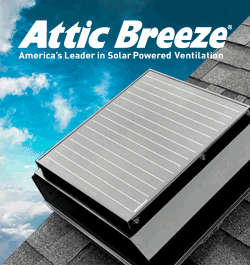



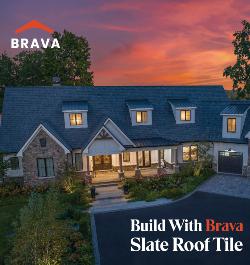






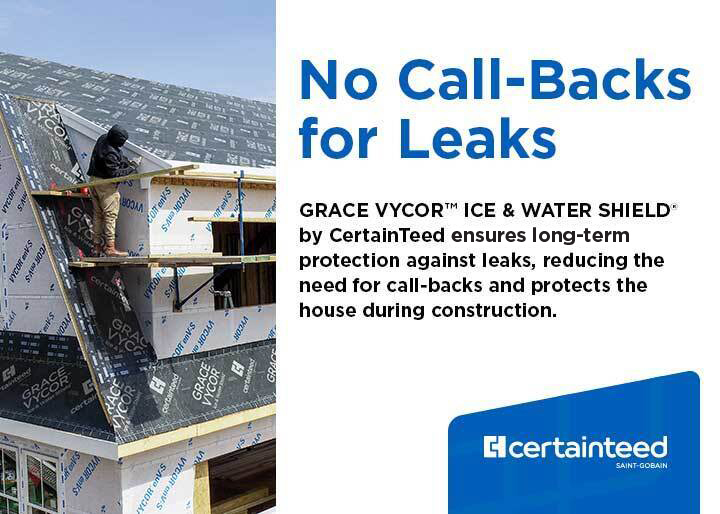


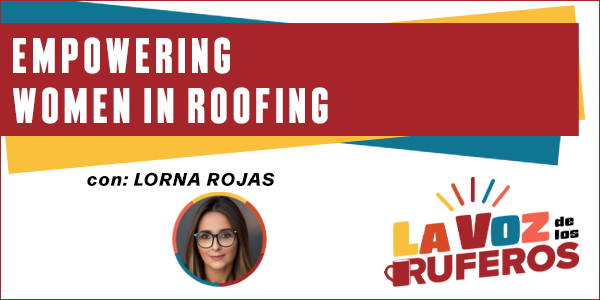






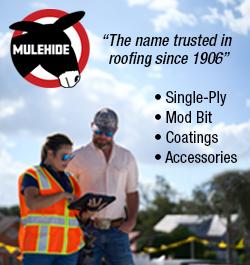

Comments
Leave a Reply
Have an account? Login to leave a comment!
Sign In